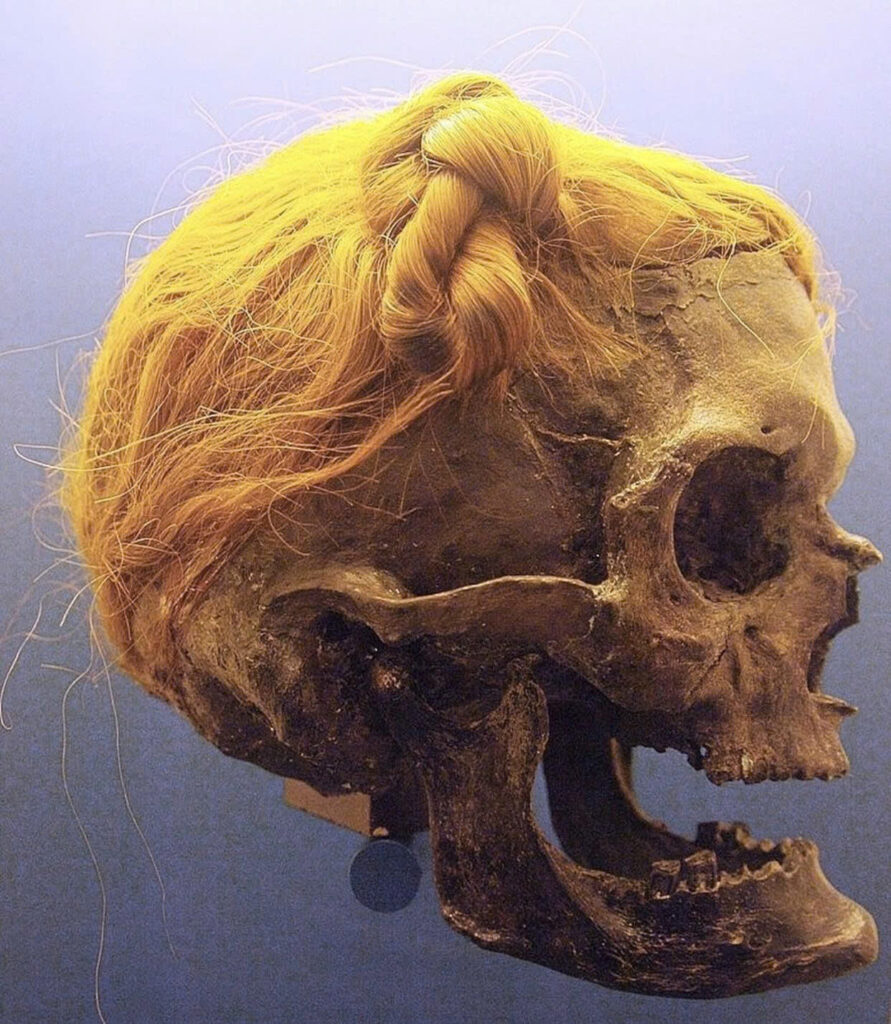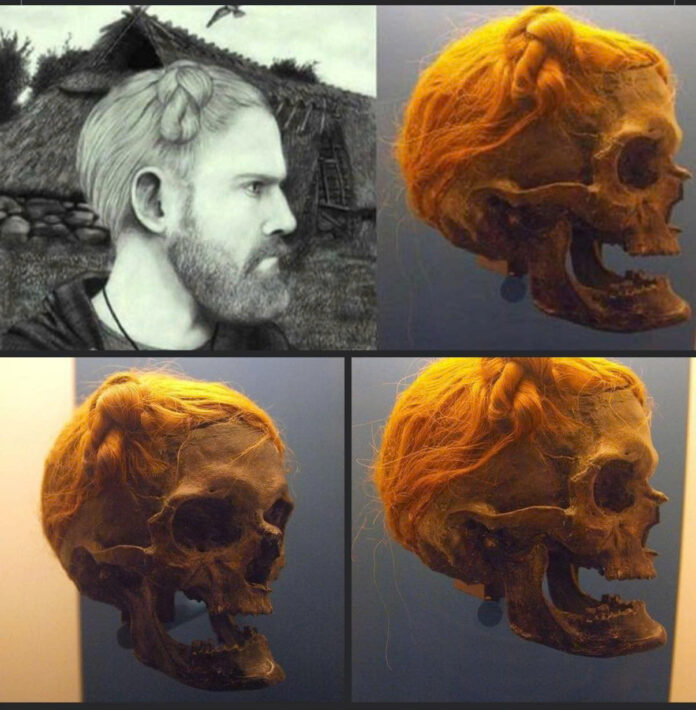A Remarkable Discovery in Northern Germany

In a tranquil bog near the quaint town of Osterby, Germany, an extraordinary remnant of ancient Germanic culture has emerged: the Suebi knot. This unique hairstyle, worn by the Suebi—a group of Germanic warriors from the Baltic region—has intrigued archaeologists, historians, and cultural enthusiasts for decades. This seemingly simple hair knot has survived the ravages of time, offering a fascinating connection to a civilization characterized by strength, social hierarchy, and martial skill.
The Meaning Behind the Suebi Knot
The Suebi knot transcended mere hairstyling; it was a profound symbol within Suebi culture. For these people, the distinctive hairstyle—parted into two locks tied at the sides of the head—held significance that reached beyond personal aesthetics. Exclusively worn by warriors and nobles, the knot served as a potent emblem of rank, bravery, and the fierce warrior ethos that defined Suebi society. Adorning the Suebi knot was a declaration of one’s status, functioning both as a social identifier and a means of asserting power against adversaries.
This hairstyle also reflects the intricate social structure of the Suebi. Unlike other ancient tribes with less visible distinctions, the Suebi’s hairstyle marked a rigid hierarchy, where only those of notable rank were allowed to wear the knot. This practice reinforced the Suebi’s identity as a warrior-centric culture, emphasizing the importance of martial prowess and noble lineage.
The Discovery of the Osterby Man
The most remarkable example of the Suebi knot was serendipitously uncovered in 1948. Local peat diggers near Osterby stumbled upon a skull adorned with reddish hair, styled in the distinctive knot that had astonishingly withstood the passage of time. The natural acids of the peat bog had preserved the head, resulting in a state akin to mummification, known as a “bog body.”

Dating back to between 75 and 130 AD, the Osterby Man’s head serves as a testament to the longevity of this hairstyle and provides a rare glimpse into Suebi life. The reddish hue of his hair is thought to stem from centuries of exposure to the bog’s acidic environment. Despite nearly two millennia, the Suebi knot remains perfectly styled, revealing an intricate aspect of this ancient warrior tradition.
The Fascinating World of Bog Bodies
Bog bodies are one of archaeology’s most captivating phenomena. Preserved in peat bogs, these remains undergo a unique preservation process due to a combination of acidic water, low temperatures, and oxygen deprivation. This environment inhibits bacterial growth, allowing both organic and inorganic materials to remain intact. Northern Europe is renowned for its bog bodies, with notable examples such as the Tollund Man in Denmark and Lindow Man in England.
These preserved bodies offer unparalleled insights into ancient life, and the Osterby Man is no exception. While most bog bodies are fully preserved, only the head of the Osterby Man remains. Nevertheless, this well-preserved relic has provided invaluable information about Suebi culture, customs, and the importance of warrior identity within their society.
The Suebi Knot as a Cultural Symbol
For archaeologists, the Suebi knot embodies more than a grooming artifact; it serves as a historical symbol imbued with layers of social, cultural, and martial significance. To create the Suebi knot, individuals would part their hair down the center and tie each section into tightly bound knots at the sides of the head, resulting in a style that was both distinctive and imposing. This hairstyle may have also had practical benefits in battle, as securely tied hair was less likely to hinder a warrior’s movements.

Moreover, the Suebi were keenly aware of the psychological implications of their appearance. A warrior sporting the Suebi knot would stand out on the battlefield, with the hairstyle representing power, rank, and the martial skill that was highly valued among the Suebi. The carefully styled hair projected an imposing presence, instilling both fear and respect in allies and foes alike.
Video
The Osterby Man Today: A Bridge to the Past
Currently housed in the archaeological museum of Gottorf Castle in Schleswig, the Osterby Man’s head—with its Suebi knot intact—serves as a tangible connection to the past. Visitors have the opportunity to witness this enduring legacy of Suebi culture and appreciate the resilience of ancient traditions. Gottorf Castle, a historic residence of the Oldenburg family, showcases various relics that depict the rich history of northern Europe, but few are as striking as the Osterby Man.

As people gaze upon the Osterby Man, they engage with a piece of history that reflects a society valuing honor, strength, and social order. The Suebi knot remains a lasting symbol of this civilization’s values and cultural pride.
The Lasting Impact of the Suebi Knot
The Suebi knot, preserved for centuries on the Osterby Man, serves as a powerful reminder of the social codes, martial traditions, and unique identity of the Suebi people. More than just a hairstyle, the Suebi knot was a badge of honor, a social identifier, and a psychological tool—now a key piece of evidence in our understanding of ancient Germanic tribes. As an enduring legacy, it continues to captivate modern audiences, inviting us to reflect on how human societies, both past and present, use symbols to communicate identity, power, and pride.
Two millennia later, the knot remains intact—a tribute not only to the resilience of hair but also to the enduring ideals, values, and expressions of a vibrant culture.

